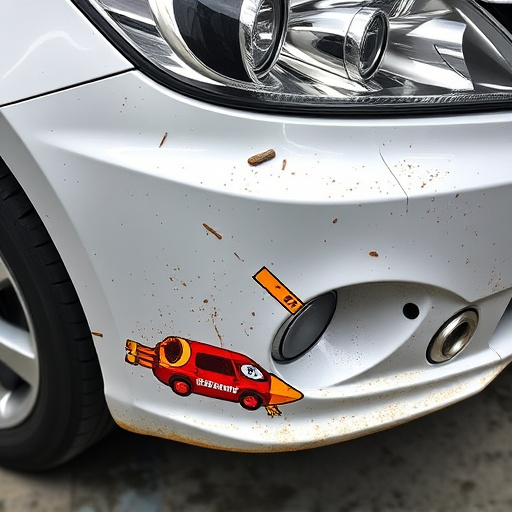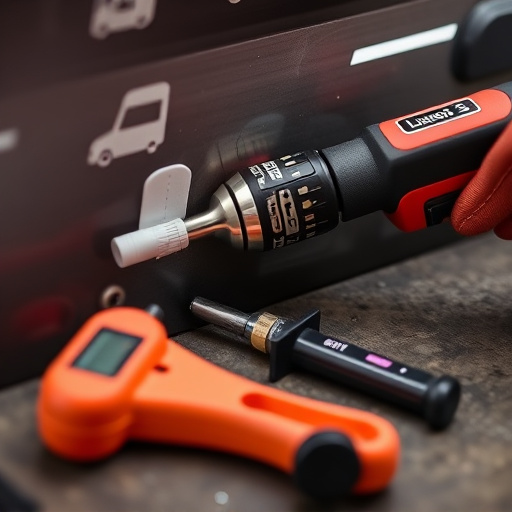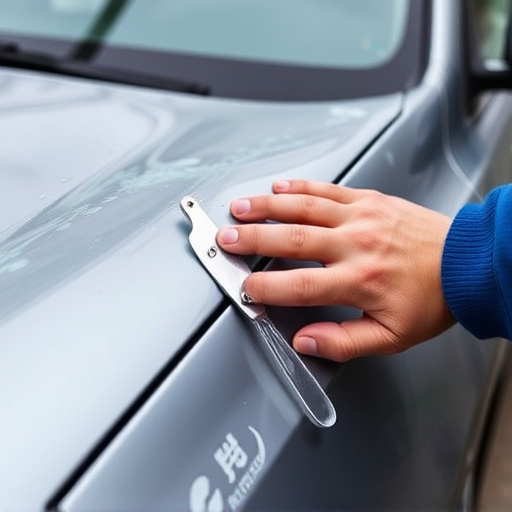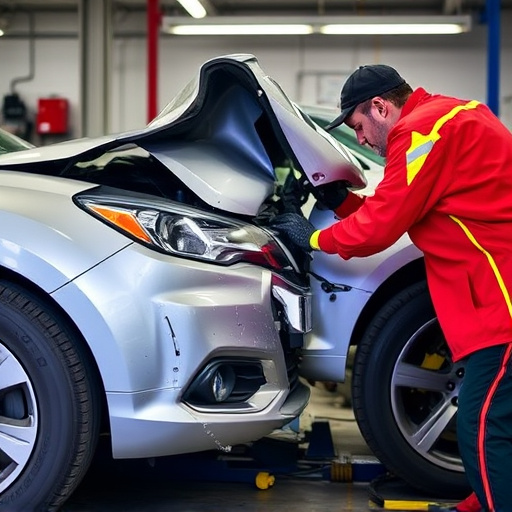Electronic diagnostics collision systems transform vehicle maintenance by detecting electrical and mechanical issues quickly. Basic systems identify major problems, while advanced tools use algorithms and sensor fusion to pinpoint subtle damage, including internal component issues. Advanced systems offer faster processing, precise data analysis, and cost savings, excelling in diagnosing modern cars' complex ECUs. For classic car restorers, these tools provide meticulous care at a competitive price point.
In today’s automotive landscape, advanced electronic diagnostics collision systems have revolutionized vehicle maintenance. This article delves into the fundamental differences between basic and advanced collision diagnostic tools. While basic systems offer essential features for identifying common issues, advanced technologies boast enhanced capabilities through sophisticated algorithms and data analysis. We compare their efficiency, accuracy, and cost-effectiveness, helping mechanics and owners navigate this evolving landscape of electronic diagnostics collision solutions.
- Basic Collision Diagnostics: Essential Features and Functions
- Advanced Systems: Enhanced Capabilities and Technology
- Comparing Tools: Efficiency, Accuracy, and Cost-Effectiveness
Basic Collision Diagnostics: Essential Features and Functions

Basic Collision Diagnostics systems form the backbone of modern vehicle maintenance, offering essential features to aid in quick and efficient electronic diagnostics collision. These systems are designed to detect and diagnose issues within a vehicle’s electrical and mechanical components, particularly in the event of an accident or during routine checks. Key functions include identifying sensor malfunctions, detecting anomalies in engine performance, and assessing damage to safety-critical systems like airbags and seatbelts.
They typically employ a combination of sensors, scanners, and software algorithms to capture and analyze data from various vehicle networks. This enables technicians to pinpoint problems accurately, streamline autobody repairs, and optimize automotive collision repair processes. By providing real-time feedback, these systems empower mechanics to make informed decisions, ensuring the safety and reliability of vehicles during vehicle collision repair.
Advanced Systems: Enhanced Capabilities and Technology

Advanced Collision Diagnostics Systems are revolutionizing vehicle repair, offering significantly enhanced capabilities compared to their basic counterparts. These cutting-edge technologies leverage sophisticated algorithms and sensor fusion to detect even subtle damage, providing a more comprehensive assessment. With advanced systems, mechanics can accurately diagnose internal component issues, such as engine or transmission problems that might be obscured in basic diagnostics. This level of precision enables faster and more effective repairs, minimizing downtime for vehicle repair.
Furthermore, these systems often incorporate real-time data analysis, allowing technicians to make informed decisions about auto painting and scratch repair. By quickly identifying the extent of damage, they can recommend appropriate solutions, ensuring that every aspect of the vehicle is restored to optimal condition. This not only enhances safety but also contributes to a more efficient and cost-effective vehicle repair process.
Comparing Tools: Efficiency, Accuracy, and Cost-Effectiveness

When comparing basic to advanced electronic diagnostics collision tools, efficiency, accuracy, and cost-effectiveness are key factors. Advanced systems often boast faster processing times and more precise data readings, thanks to sophisticated sensors and complex algorithms. This allows for quicker troubleshooting, reducing repair times and labor costs significantly. Moreover, their ability to pinpoint exact issues within a car’s electrical system can prevent unnecessary replacement of parts, saving clients money on auto repair services.
While basic tools are reliable for identifying major problems like damaged components or short circuits, advanced systems excel in diagnosing subtle faults related to sensors, modules, and communication networks. This level of detail is crucial for modern cars with intricate electronic control units (ECUs) that govern various functions, from engine performance to safety features. For enthusiasts engaged in classic car restoration, an advanced diagnostics system can be a valuable investment, ensuring the meticulous care needed for these vintage vehicles while also offering insights into their complex systems—all at a competitive price point relative to the benefits offered, making it a practical choice among auto repair services.
Collision diagnostics systems have evolved significantly, with advanced technologies offering enhanced capabilities compared to basic models. By employing sophisticated sensors, robust data analysis, and real-time monitoring, advanced systems provide more accurate and efficient electronic diagnostics for collision repair. While costlier, their improved accuracy and streamlined workflows ultimately benefit both repair shops and customers, ensuring safer, more reliable vehicle restoration.














